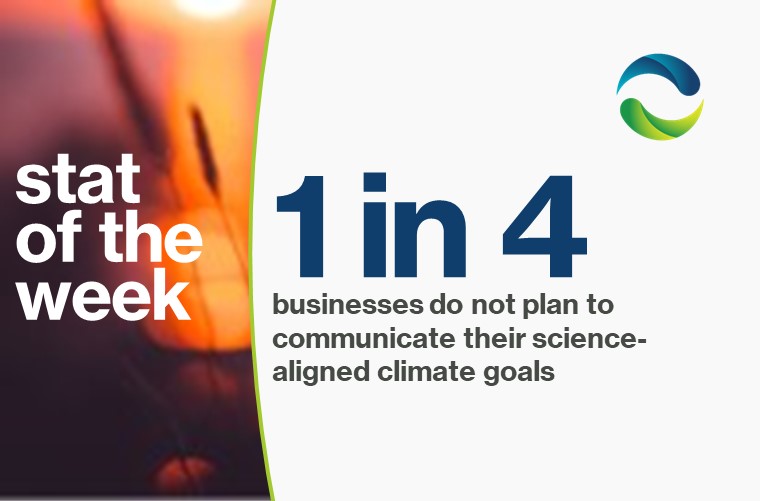Last week the UK recorded historic high temperatures of 104°F, while several other regions across the EU, US, and Asia experienced extreme heat warnings and massive disruptions. Although the ever-rising numbers on thermometers capture media headlines and public anguish, extreme heat events have serious economic implications that business leaders must pay attention to now. Though particular industries will feel some of these effects more than others, this list shows that heat waves will entail a host of disruptive side effects that will hurt bottom lines in far more complex ways than higher electric bills.
- Workplace injuries become more common. A study conducted from 2001 to 2018 found that hotter temperatures increase instances of workplace injury in both indoor and outdoor settings. In addition, heat events were also related to an increase in injury types unrelated to temperature (for example, falling from a ladder). Since workplace safety is a key metric and concern for businesses, this relationship will be crucial to understand and address.
- Traffic and car crashes spike. A 2015 study conducted in Spain found that car crashes went up 7.7% during extreme heat days. Risk of crashes was related to lower driver performance (caused by distraction, driver error, fatigue, and sleepiness) which were all direct or indirect effects of the extreme heat event. These crashes, the associated traffic, and costs will have negative effects on businesses and employees alike.
- Electric bills spike with widespread AC use and surging demand. Businesses and households alike ramp up air conditioning and fan use during extreme heat days, straining wallets as temperatures rise. Estimates put those higher electric bills at up to 83% higher than current averages by 2100, largely attributed to increased use and number of AC units around the globe.
- Construction projects see costly delays. High-heat days hurt the delivery, cost, and reliability of construction projects. These delays stem from the additional time and breaks required to avoid health issues and accidents among workers, the longer wait times required when materials take longer to set and cure in high-heat settings, and the increased cost from extended leasing periods and contractual penalties as delivery timing estimates are increasingly varied and unpredictable.
- People get worse sleep. Studies show that sleep length and sleep quality are worse at 36°C (98.8°F) than at 32°C (89.6°F), and were the worst at 100°F (the hottest temperature examined in this study). As many of us see triple digit days and nights, we will need to prepare and account for the many ways sleep deprivation could impact our performance and wellbeing.
- Insurance and reinsurance prices skyrocket. As extreme heat and fires become frequent occurrences, particularly in western Europe and the West Coast, homeowners and businesses alike will struggle to find insurance coverage and face high costs where they can get coverage. Traditional insurance and reinsurance models are struggling to cope with the high and increasingly frequent payouts for natural disasters like wildfires, but facility and property owners have to continue to protect their physical assets.
- Energy supplies can falter. During the 2003 heatwave in France, nuclear power production (equaling the output of four standard nuclear power plants) was suspended, because the temperature of the rivers used to cool reactors was too high to safely sustain operations and energy production. Aside from demand spikes and black outs, extreme heat events will threaten safe energy supply and cause reliability issues that businesses will have to face.
- Electric vehicles see decreased performance. Above temperatures of 95°F, electric vehicle range is significantly diminished, with average range reductions of 17% due to the high energy usage of air conditioning. As consumers and businesses turn to electric fleets, they will need to monitor developments in range extension and battery technology for sustained performance during extreme heat events.
- Infrastructure is directly damaged. Days-long suspension of service came following the Pacific Northwest’s heat dome last summer, as streetcar cables melted and asphalt roads buckled. These disruptions impacted commuters as well as populations seeking refuge in cooling centers accessible via mass transit and can impact all infrastructure and facilities in areas where heat will greatly exceed prior maximum heat forecasts.
- Water quality goes down. Rising temperatures around bodies of water can cause spikes in eutrophication (excessive nutrient richness in bodies of water that leads to harm to existing animal and plant populations) and algal blooms, while extreme heat waves simultaneously make interventions to combat this eutrophication less effective. Rising water temperatures encourage the spread of freshwater pathogens, increasing incidence of illnesses as well as harming drinking water quality.
- Cryptocurrency mining is suspended. Mining crypto requires massive amounts of electricity, which increases strain on the energy grid. During recent high heat days, many companies suspended mining at their facilities in Texas—where many crypto companies have moved due to generally lower energy prices and lower regulation. Though this eased the load on the grid to provide critical capacity for air conditioning use, it disrupted crypto operations and revenue.
- Wind energy generation can become less reliable. Some regions in Europe are seeing increased wind speeds, while other areas (concentrated in central Europe) are experiencing seeing diminished speeds, all impacting the efficacy of current wind farms and placement of future projects. Increasing fluctuation of wind patterns, caused by lower temperature differentials and general decreases in wind speeds, will challenge renewable energy generators and companies engaged in or interested in renewable energy purchasing.
- Trains run slower. Last year TransLink, the public transit agency in Vancouver, had to decrease train speeds and accept a lower on-time performance metric to keep steel rails from buckling. Extreme heat events can cause extreme compression and compromise to steel train rails, which can result in time-consuming and costly repairs as well as supply chain disruptions.
- Mortality in nursing homes increase. Extreme heat events cause increased mortality rates in nursing and senior care homes since seniors are also more susceptible to heat-related illnesses. Compounding this is the fact that many nursing and senior care facilities are older buildings without air conditioning and adequate HVAC systems, requiring costly but necessary replacements to address this public health issue.
- Air turbulence and flight delays increase. Higher temperatures mean thinner air and less lift, making takeoff difficult or impossible for smaller jets. Hotter atmosphere can also lead to increased turbulence. LaGuardia Airport may already need to lengthen its runway, as these rising temperatures make takeoffs more challenging. This will spell serious costs for airports and airlines, and big disruptions in business travel.
- Tourism revenue falls. Extreme heat waves and days strain tourism revenue in areas like Florida, where tourism represents 11% of employment in the state. Hits to Florida’s tourism businesses and the associated services catering to visitors will result in significant losses to the state’s economy, as well as other regions heavily reliant on hospitality, tourism, and service industries.
- Critical cotton supply chains fail. As cotton crops plummet from heat and drought, supply and affordability issues will arise across industries ranging from fashion to healthcare. Beyond its use in clothing production, cotton is a key component in many basic consumer products like diapers, tampons, and hygiene items, which all could see price increases as a result.
- ER visits spike and hospital systems are strained. Last summer’s Pacific Northwest heat wave saw massive increases in emergency visits for heat- and non-heat-related causes. Studies have found that extreme heat days correlate with increased ER visits for mental health crises such as substance abuse cases, depression, and anxiety. As some of the costliest interactions that healthcare systems face, hospitals and care providers will have to prepare to deal with the associated strain from extreme heat events.
- Staple food prices go up. Extreme heat causes increased food costs and reduced crop yield for major staples such as corn and soybeans. The US produces 41% of the world’s corn and 38% of soybeans, and studies show that there is a steep decline in yields of these crops past temperatures of 32C, leading to supply and access issues globally.
- Meat production and livestock populations suffer. All domesticated livestock species are severely affected by heat stress during heat waves, resulting in lowered productivity, reduced fertility, and more. This will cause increased meat prices, but also increased antibiotic usage to combat livestock illness—overuse of antibiotics in livestock can lead to rises in antibiotic resistance and food-borne illness.
For those living and working in more moderate climates, these impacts may seem far-off, but for large swaths of the globe, these are becoming palpable annual realities. These will also be felt more acutely in cities and regions where triple digit temperatures were once considered impossible but are rapidly becoming a new normal. While businesses cannot singlehandedly stop warming, leaders can chart, plan for, and mitigate the ways that heat events will hurt their employees, capital, supply chain, and revenue streams. Mitigating climate change is now only one expense to businesses—adapting to extreme heat is another costly piece of the puzzle. For leaders who are ready to tackle this new business challenge, The Climate Board can serve as a valuable resource for navigating the climate action journey.




